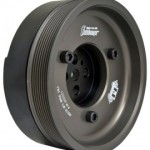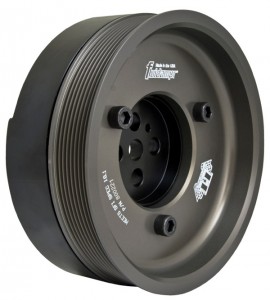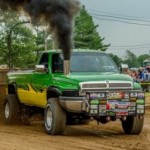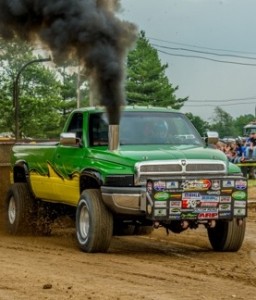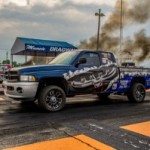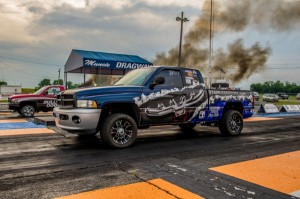Apple’s iWatch will pack the most important tech most smartwatches are missing
Apple’s iWatch will reportedly have integrated wireless battery charging capabilities, a new report from China says, citing Luxshare insiders who have revealed that the company has already provided wireless charging coils for the product. Apple is said to currently be testing the company’s wireless charging coils in the iWatch and pending approval, Luxshare may also supply the wireless charging module for the device.
Read more here: Boy Genius Report
2013′s most addictive iOS game gets an even more thrilling sequel
Popular iOS game Dots, a puzzle game that offers a very addictive gameplay, now has an even more interesting sequel that will let players enjoy a story-based game experience, making the game less about competing for a high score and more about enjoying a more immersive experience.
Read more here: Boy Genius Report
Crazy 4-inch iPhone that unfolds into an iPad mini reportedly being tested
Apple may be working on a few wild prototypes, Jefferies analyst Peter Misek wrote in a research note to investors, including a 4-inch OLED iPhone that transforms into an iPad mini. Apparently, Misek got wind of various Apple prototypes from Asian suppliers, although MacRumors suggests the company might keep such prototypes close to the chest, producing them in-house or in very small quantities by certain partners.
Read more here: Boy Genius Report
Fluidampr Performance Diesel Dampers
Fluidampr Performance Diesel dampers are now available for all late-model Chevy/GM, Ford and Dodge/Ram diesel trucks. Protect your engine with the technology high power diesel OEMs use.
Recommended whenever performance upgrades are made for superior protection while achieving optimum performance across your entire rpm range. Maintenance free. Fluidampr is the official damper of DIESEL Motorsports. SFI 18.1 approved. www.fluidampr.com 716-592-1000.
The post Fluidampr Performance Diesel Dampers appeared first on Engine Builder Magazine.
Read more here: Engine Builder Magazine
Building Performance Cummins Engines
The clouds of black smoke along with the whistling of the turbo bring out a new wave of spectators. It’s all about the rumble and feel from the massive foot pounds of torque, not the horsepower. Who would have ever thought that a diesel engine would gain respect in the world of performance?
Now, it’s not uncommon to see a diesel powered dragster travel the quarter-mile in 8 seconds or an everyday work truck enter the Saturday night sled pull. The diesel engine, which was once considered a clanking bucket of bolts, has brought about a new era of drag racing and sled pulling. As diesel engines have become more technologically advanced, efficient and reliable, they are loved by members of all generations. Whether the enjoyment is from the ease at which we pull our camper or the fact that we can take our work truck to the dragstrip on the weekend, diesel performance is in full swing.
With the help of the aftermarket, more performance can be gained from simple add-ons such as programmers, cold-air intake systems, exhaust systems and turbochargers, to all out hardcore engine internals.
Talking Torque
Torque is what you feel in the seat of your pants on the take off. Or, the low down grunt when pulling loads up steep grades at a low RPM. There are several factors as to why the diesel produces that low down RPM torque. There is a combination between the long stroke, boost and compression ratio. The 6.7L Cummins has a bore of 4.21”, but has a stroke of 4.88”. Longer stroke means that the pistons and connecting rods create more leverage on the crankshaft. When the intake valve opens, air is pushed into the engine from the turbo directly into the cylinders. There is no throttle blade as in a gasoline engine. There are no restrictions to cylinder filling other than the intake valve itself. The compression ratio of the
Here’s a sneak peak under the hood of a mid-sized Cummins powered sled pulling truck that is under construction. With the growing popularity of the mid-size diesel, specialized companies are catering to the growing demand for more power.
6.7L Cummins is 17.3:1. Compression ratio is the total volume of the combustion chamber when the piston is at Bottom Dead Center to the total volume of the combustion chamber when the piston is at Top Dead Center. When the intake valve closes, the piston starts its travel up the bore compressing the air that filled the cylinder. As the air is compressed it begins to heat up reaching temperatures upwards of 1400 degrees F.
Then, right before Top Dead Center, fuel is injected into the cylinder. The atomized droplets of diesel fuel are vaporized and start to burn rapidly which pushes on the piston causing the crankshaft to rotate.
The diesel fuel being vaporized by the heat and pressure becomes very efficient since the heat generated was used for ignition. A diesel engine can run on very lean air fuel ratios (referred to as stoiciometry) as high as 50:1 under cruising conditions compared to 14.7:1 of gasoline. The increased compression ratio of the diesel engine along with the longer stroke of the crankshaft calls for a heavy-duty rotating assembly made to withstand extreme cylinder pressures. The heavy internals also limit the amount of engine speed. The engine usually reaches peak torque around 1700 RPM and maximum horsepower at 2800 RPM.
Power Pick
The Cummins diesel engine has become extremely popular as the choice for performance. Even though there are other diesel engines such as the Duramax and Powerstroke (which can make power also), the Cummins has always been one of the founding forefathers of diesel power. Cummins gained a lot of notoriety in 1989 with the introduction into the Dodge truck with a 5.9L, inline six cylinder, and turbocharged diesel engine. From there, the 5.9L and the later 6.7L, have proven reliable and dependable, giving them more favor to consumers. The love of the Cummins engines by consumers has opened up the opportunity for niche markets in the growing demand for more Cummins
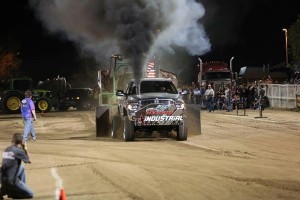
A mid-size Cummins diesel power display on a Saturday night sled pull, producing more than 1,300 reliable horsepower “at the wheels.”
performance.
One common place that Cummins performance can be found would be sled pull competitions. Sled pull competitions are divided into classes that are limited to the turbo inlet size. For instance, if you were pulling in a 3.0 class, then the turbo inlet size of your combination would be limited to 3.00”. It is often wondered as to what modifications are done in order to reach the amount of power output along with engine RPM that is seen at these competitions. A lot of modifications can be seen on the outside, but there are rare opportunities given to see the actual working internals of the power plant. There are several Cummins builds that can be found in the media, but the question is often asked as to what works and what is truly needed. Of course, that depends on the application, but we wanted to see what Cummins build is on the track and what combination seems to be working for them.
We were invited in by Industrial Injection, a diesel parts supplier based in Salt lake City, UT, to get a sneak peak at some modifications that are used for their sled pulling applications.
The engine build starts with a stock 6.7L block. The factory blocks are very strong and if the combination is right, structural integrity is not the problem. The blocks are usually bored no more than .020” (yielding a 4.230 bore) and then deck plate honed. Deck plate honing is very important to any engine build for proper cylinder surface. Even though the Cummins block is very rigid, the cylinders can distort as much as .003” when the cylinder head is torqued down. If the block is not properly honed, .003” cylinder
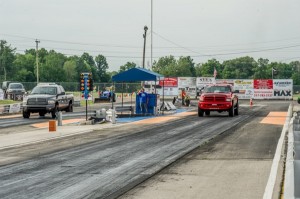
Across much of the Midwest, diesel drag races have become a popular event in the rural areas. Photo courtesy DIESEL Motorsports/Eric Sullivan
distortion can lead to serious piston scuffing especially with the amount of cylinder heat along with major blow-by.
The block is then decked and fitted with custom billet freeze plugs. (Check out YouTube video Blueprint Cummins)
The surprise for the rotating assembly was the use of the factory 6.7L crankshaft, which yields a stroke of 4.88”.
The rotating assembly consists of custom-made pistons along with its own proprietary compression ratio. The connecting rods are an H-beam design made by Carillo, which are a stock length of 7.559” and fit the 5.9L and 6.7L engines. The rotating assembly is balanced and then fitted with a Fluidampr harmonic damper. Before the rotating assembly is placed into the block, the factory lifters are installed along with a custom ground camshaft.
Remember, in a Cummins engine, the lifters go in from the bottom. So the lifters and camshaft are fitted in the block before the rotating assembly.
After the rotating assembly has been placed into the block, a 5/8” thick main bearing cap Gorilla Girdle made by Industrial Injection is installed. The purpose of the main bearing girdle is to increase block rigidity and torsional stiffness by tying the main caps and oil pan rails together. The Gorilla Girdle is CNC machined and when installed it stabilizes and strengthens the bottom of the block and evenly distributes crank load across the main caps eliminating main cap walk.
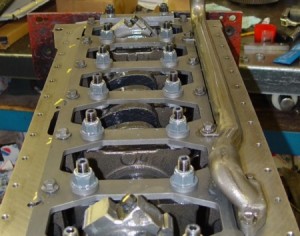
The “Gorilla Girdle” is a proprietary machined piece used to prevent main bearing cap walk by linking all of the main bearing caps together and to strengthen the block by being bolted to the oil pan rails.
The cylinder head used in this sled pulling application is stock, but with a lot of modifications. First of all, the cylinder head is thoroughly sonic checked to insure the integrity of the head before modifications can be performed. Porting of the cylinder head becomes a problem because the intake manifold of the Cummins is made with the cylinder head. In order to properly port the cylinder head, the intake manifold of the cylinder head must be removed in the mill.
After the intake is removed, the intake and exhaust ports are then CNC milled with their proprietary port design for maximum flow and swirl. The CNC modified intake and exhaust ports flow 289 cfm compared to 175 cfm stock.
Various valve angles are used on the valve seats and custom valves, but the ports still utilize the stock diameter valve sizes. Custom valve springs are installed but the stock retainers and factory rocker arms are still used.
On the deck surface of the cylinder heads, .105” fire rings are milled and special head gaskets are installed for extreme cylinder pressures. The pushrods are a forged one piece design and increased in diameter to 10.90 mm.
When the cylinder head modifications were performed, the intake manifold was milled off for access to machine the intake ports. The cylinder head was then machined to accept a ZZ Fabrications intake, which was designed specifically for this sled pulling application for their engine build and boost application. They also custom build aluminum intake manifolds machined to accept the factory common rail fuel system, sensors and heater grid for the 5.9L and 6.7L applications.
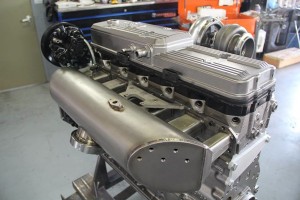
The new intake manifold is being fitted where the old one was milled off. ZZ Fabrications developed this Cummins intake for this particular sled pulling application.
To feed the 1300 horsepower 6.7L engine, a rail injection system known as Double Dragons is used. The Double Dragons are twin Bosch CP-3 common rail pumps that have been modified to pump 120% more than stock. This amount of fuel is needed because the injectors are rated at 500cc’s. These injectors are for high horsepower applications also known as Industrial Injection “Cobra” injectors.
The induction system consists of a 91mm custom single turbo for the 3.0 sled pull class. The turbo is mounted to a custom fabricated exhaust manifold which is pulse tuned for maximum turbine speed for this RPM application.
Compressed air from the turbo is directed through a custom-built water to air intercooler manufactured by a company called Frozen Boost. One thing to absorb when you see the pieces of this Cummins build with the modifications to the cylinder head, block and fuel system, is that you get an idea of what goes on to achieve incredible amounts of torque and power.
For a relatively small displacement in-line six cylinder diesel, this engine cranks out more than 1,300 horsepower and will turn 5,200 RPM. This power is seen on the chassis dyno being made at the rear wheels. That places the torque output of the engine in the 2,000 ft. lb. range.
If you own a Cummins powered truck with an automatic transmission, there is one thing to think about when doing any modifications.
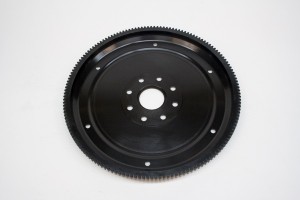
When modifying your Cummins engine, the flexplate is often overlooked. For mild performance upgrades, the Platinum series flexplate from PRW is a cost-effective solution for failures due to cracking. The Platinum series is offered for the 5.9L and 6.7L Cummins engines.
Take for instance the 2013 6.7L engine. The factory horsepower rating is 385 @ 2800 RPM. If you begin upgrading your engine with some performance bolt-ons, that engine can produce well over 500 horsepower. Something to consider would be also upgrading the flexplate.
When reaching the 500 hp mark, the factory flexplate tends to crack and come apart. An easy solution is to replace the factory steel flexplate with an upgraded steel or machined billet flexplate.
To remedy the on-going problem of a broken factory flexplate occurring to many of these sled pullers and drag racers, as well as everyday work loads, PRW has introduced two versions of flexplates for different performance applications of the 5.9L and 6.7L engines. One version, the Platinum Series, is cost effective and machined from cold rolled steel and manufactured for the everyday driver needing some insurance. The Platinum Series is designed for stock replacement where the engines have been fitted with performance add-ons and upgrades that propel the engine to over 500 horsepower. This flexplate has a 4mm thick center plate with double welded starter ring gears and is SFI 29.1 certified.
The other version, known as the Signature Series, is a one-piece billet steel forging made to withstand over 1,500 ft. lbs. of torque. This flexplate is CNC-lathe machined from 5140 billet steel that is SFI 29.3 certified and coated with a long lasting black oxide finish for rust prevention. The Signature Series flexplates are precision balanced and offered for 5.9L and 6.7L applications also.
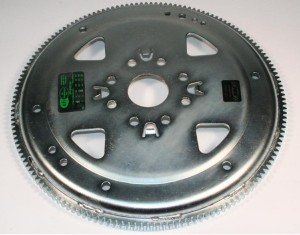
For highly-modified Cummins engines, PRW also offers a Signature series flexplate that is CNC machined from 5140 billet steel that has an SFI rating of 29.3 that can handle over 1500 ft. lbs of torque.
PRW and Performance Quotient Brands have been readily available to the industry for nearly 10 years, offering technically advanced engine parts for high performance and race applications. (www.prw-usa.com)
So whether you are a sled pulling fan or just getting into this side of the performance market, keep on the lookout for the latest Cummins-powered engine from Industrial Injection known as the “Black Pearl.” This custom Cummins power plant produces insane power levels reaching into the 2500 horsepower range.
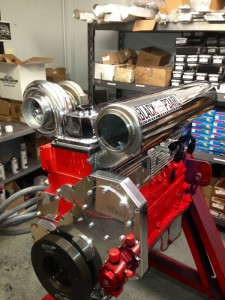
An upcoming Cummins Performance engine project that Industrial Injection (www.industrialinjection.com) is working on is labeled the Black Pearl. While the engine is still in the research and development phase, preliminary dyno testing has shown more than 2,500 horsepower. We will keep you posted with more details soon.
The post Building Performance Cummins Engines appeared first on Engine Builder Magazine.
Read more here: Engine Builder Magazine
The best thing you’ll read today: Hacking victim becomes attacker when $20,000 bounty turns his hacker into a crybaby
Hackers, beware: Choosing the wrong victim can have severe consequences. And Roger Ver, also referred to as “The Bitcoin Jesus,” is the wrong victim.
Last week, a hacker called “Nitrous” contacted Ver to inform him that his Hotmail account had been compromised. By breaching the account, the hacker was able to obtain Ver’s Social Security number, his passport number, his mother’s Social Security number and other sensitive information.
As Wired reported, this would end up being one of the biggest mistakes Nitrous has ever made.
Read more here: Boy Genius Report
Engine Builder Shop Solutions May 2014
Plastic Fantastic
For many years, bolt boots have been the primary way to protect the crankshaft journal from damage during piston installation. Some shop supply companies sell long steel tubes that serve as guides to help align the rod to the journal. These help align the rod, but can also damage the journal surface. For many years we have used a low cost alternative that both protects the journal surface and aligns the rod to the journal.
We use hard plastic tubing that is cut in lengths of 6”-12”. Simply slide one end over the bolt and this not only keeps the bolt from contacting the journal, but it also serves as a guide to line up the rod. We use various lengths for different motors depending on deck height. A little experimenting will help you quickly determine which lengths work best for each motor.
The tubing is available at most home improvement stores. The cost is minimal and most stores will sell it to you by the foot, so there is no need to buy a complete roll. 3/8” tubing will work on 3/8 bolts. We even have bolts already inserted in tubing for the rods that use cap screws. Give it a try and we think you’ll agree with us that this is a great way to install pistons.
Chuck Verde, Casey’s Machine – West Valley, UT
Use Spare Time Wisely
Everyone once in awhile gets a slow day or two. You may notice that your guys want to slow the pace as well and laze around, but you have to keep them moving! Many things can be done on slow days. Clean the shop, organize inventory, build for stock and maintain equipment. If you don’t do it on slow days, you will be forced to do it when you don’t have time, which costs you money. Machines don’t wait for a slow day to need maintenance. Be proactive!
Jeffrey Myers, MAR Automotive, Inc. – Philadelphia, PA.
Camshaft Bearing Fundamentals
Camshaft bearings are more or less taken for granted. We knock out the worn pieces, press in a new set and assume everything will end up the same as it originally was. This is intended to explain why this assumption is not necessarily true and why we should not just take cam bearings for granted.
All but a very few cam bearings are bi-metal in construction and nearly all engines originally have their camshaft bearings installed in the unfinished condition and machined to size in the block as part of the block manufacturing process. This practice allows cam bearing ID’s to be closely controlled for size, shape and alignment. In the rebuilding process we remove these “Finished-In-Place” (FIP) bearings and replace them with parts which have been “precision” machined outside the engine.
Replacing FIP with precision cam bearings introduces a number of variables not present in the original engine assembly. Originally, the clearance between the shaft and bearings was a direct result of the difference between the ID size the bearing was machined to and the shaft OD. When a precision part is installed its final ID size is determined by a combination of the manufactured ID size, the bearing’s wall thickness and the diameter and shape of the housing it is installed in to. These variables introduce a set of conditions we have little control over.
If metal is shaved off the bearing OD during installation and builds up between the bearing and housing bore, the bearing will distort inward. If the block varies from spec due to distortion from overheating or the installation and removal of heads and manifolds, these variations will be reflected in the new cam bearings ID size and shape and ultimately in the bearing clearance and alignment.
The same causes of distortion in main bores are likely to produce similar effects in the cam bearing bores. This explains why, after installing new cam bearings, we sometimes encounter problems installing the camshaft. Casual engine builders are often confused by the fact that the cam turned freely in the old bearings and refuses to turn in the newly installed bearings.
First, remember that block distortion occurs gradually over a period of time, giving the camshaft the opportunity to wear the old bearings to match the distortion. Another factor is the relative skill or lack of skill exhibited by the installer of the replacement bearings. Nicks and dings will prevent the cam from turning.
Before undertaking a rebuild, check the cam bearing housing bores for size and shape. Bores that are undersize, oversize, or out-of-round are likely to cause problems. Some engines are built with oversize OD cam bearings as a result of a salvage operation to correct bores originally machined out of spec.
Replacement parts for these blocks are frequently difficult, if not impossible, to obtain. Check main bearing housing bore size, shape and alignment.
If the main bores are out of alignment or shape, it is likely the cam bearings are also. Nobody wants to scrap a block just because the cam bores are out of alignment, but after having made the above checks you will at least know what to expect and understand that the problem is not the fault of the new cam bearings.
A tight fit can be corrected by reaming or hand scraping the bearing surface. Honing is not recommended because grit from the hone stone will become embedded in the bearing surface. A homemade reamer can be made using an old camshaft if the journals are still within spec. Cut a groove diagonally across each journal about 1/8” deep.
Then, relieve the journal surface on one side of the groove, leaving the other side sharp. This produces a single flute reamer that can be turned with the aid of an old cam sprocket to remove bearing metal from the high or tight spots.
This procedure works pretty well with babbitt-lined cam bearings. The stronger (and harder) copper-lead and aluminum-based bearing metals are somewhat harder to cut. These materials are used in late model automotive and most heavy-duty engines for their greater strength and temperature resistance. As cam loads and engine operating temperatures have increased, babbitt has had to be replaced in favor of these stronger materials for better durability.
Loose fits are a tougher problem to deal with. Where housing bores are oversized, they can be sleeved or cam bearing OD’s built up with nickel to produce a tighter fit. These practices are generally employed when the block cannot be replaced.
– Engine Pro Technical Committee with thanks to Mahle Aftermarket Inc.
The post Engine Builder Shop Solutions May 2014 appeared first on Engine Builder Magazine.
Read more here: Engine Builder Magazine
Diesel Motorsports Grow in Popularity
DIESEL Motorsports began 13 years ago in Muncie, IN, where the first “diesel only” event was put together by a local TDR Club and two promoters.
Organizers held the event because the drag strips at that time would not let diesel trucks run on their tracks. In fact, they still do not have diesel classes for the trucks.
The truck enthusiasts also got the snub from tractor clubs. Local tractor pulling clubs back then would not let diesel trucks pull or get paid at local fairs, pulls and club events.
But, that has changed over the past decade, and now you can find diesel truck pulling/drag racing from June 1st to August 30th – pretty much every night of the week – from Missouri all the way over to the far edges of Pennsylvania.
For now, DIESEL Motorsports is predominate in the Midwest states, mostly because diesel trucks are used in farming, construction, hauling and automotive.
It started when diesel enthusiasts took their work trucks and started playing around with the engine components that produce more power. Hotter injectors, turbos, pumps, tuning, air intake and exhaust can produce double and now even triple the horsepower of the OEM diesel engine.
Some of the diesel enthusiasts use their truck on the job during the week, then race it on the weekends.
Photos in this article courtesy of DIESEL Motorsports/Eric Sullivan.
Ten years ago, the top diesel trucks competing were 800-900 horsepower. Today, they are 1,500-2,100 horsepower. The technology has blossomed within these diesel shops and many of their advancements are now available in the marketplace. Just like the early gas hot rod market, many of the diesel advancements will find their way to the OEM vehicles in the near future.
Customer Profile
A street diesel truck for our diesel enthusiasts is a typical 600-800 hp engine, getting 18-21 mpg and pulling a 10,000 lb. trailer for work. When it’s time to “play,” the owner can unhitch, go the track on the weekends and pull or race down the tracks.
Diesel truck motorsports has become a lifestyle within this industry – hard working, family–oriented, rural people who come to the events where they enjoy the time with their families in a fair-type atmosphere.
Spectators and competitors will back their truck up to the track, put chairs in the beds, put a pop-up canopy over them and get out the coolers/grills for the event. They can talk with each other and view what other people have done to their trucks. It’s a social event for each area of the country, and these trucks do differ state to state.
It’s a split crowd in age, 55% is the 20-30 year-old crowd, and the 35-50 year-old group is about 40% of the marketplace.
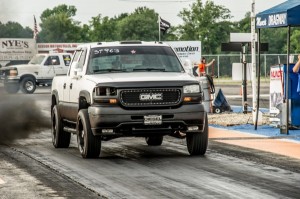 Sled pulling makes up about 70% of the DIESEL Motorsports competitors with the remaining 30% as diesel drag racing.
Sled pulling makes up about 70% of the DIESEL Motorsports competitors with the remaining 30% as diesel drag racing.
The competitor’s percentage for the sport change from state to state, but in the Midwest where most diesel performance is predominate, the above percentages apply.
One of the reasons pulling is more popular is because pulling has been around at county fairs for many years starting with horses. Plus all it takes is a dirt track, some tractors to scrape the dirt and you are pulling.
Drag racing obviously requires an established track, which is quite expensive to operate and requires classes or events to run the diesel trucks.
Most diesel truck owners have pulled a trailer and are familiar with what it takes to pull under load. It does take some training and experience to win at drag racing along with having a powerful diesel truck.
It is no surprise that DIESEL Motorsports’ largest events are in Indiana, Ohio and Pennsylvania. The rural communities in the states make it very popular along with having the three diesel OEM engine plants in Indiana and Ohio.
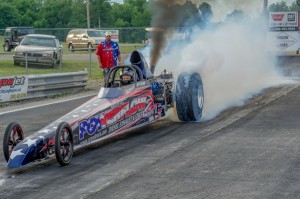 Since the EPA has shut down the use of tuners for the newer trucks (2008 and up), most diesel shops have gone back to enhancing the power using engine components instead of the electronics. This should have been done first, but it was pretty cheap to add a tuning box and crank up the power. However, most OEM drivetrain parts could not handle the extra power and blew apart.
Since the EPA has shut down the use of tuners for the newer trucks (2008 and up), most diesel shops have gone back to enhancing the power using engine components instead of the electronics. This should have been done first, but it was pretty cheap to add a tuning box and crank up the power. However, most OEM drivetrain parts could not handle the extra power and blew apart.
Before one can add power to a OEM diesel engine, there are certain things an engine builder needs to do to reinforce the powerplant – such as stronger head studs, gaskets, stronger rods, high-performance pistons, and other components because of the torque produced by the extra horsepower.
Most enthusiasts will quickly add-on a larger air intake system, exhaust system, turbo, injectors, injection pump and fuel pump in order to obtain more power.
If you are building a performance diesel, don’t forget to address with the customer the truck’s transmission and driveline, which will have a hard time keeping up with higher hp and torque. Some of the pulling trucks quickly went from double clutches to triple clutches in order to hold the power and transfer it to the driveline.
Popularity Contest
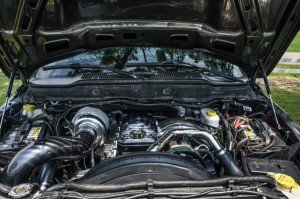 Hands down, the Dodge/RAM truck is the most popular for competitors with the GM Duramax following behind in 2nd place. The Cummins engine is the most durable for making modifications and staying together be it the 5.9L or the newer 6.7L. Many of the competitors have even gone back to the 12 valve Cummins because of the mechanical tuning as opposed to electronic tuning on the newer engines.
Hands down, the Dodge/RAM truck is the most popular for competitors with the GM Duramax following behind in 2nd place. The Cummins engine is the most durable for making modifications and staying together be it the 5.9L or the newer 6.7L. Many of the competitors have even gone back to the 12 valve Cummins because of the mechanical tuning as opposed to electronic tuning on the newer engines.
Duramax is quickly catching up in pulling and racing with twin turbo kits becoming more and more popular for adding the extra power. There are several enhancements being made to the Duramax that makes it a close 2nd contender.
You will find many Ford diesels in the crowd and parking lot, but not too many on the tracks. The Ford OEM components for diesels are only rated to handle about a 13% increase in power without modifications, where the Dodge is about 40% and the Duramax at 30%. Quite a difference there with what you start out with for engine durability using increased horsepower components.
So, is there money to be had for diesel race engine building? You bet there is, since most of these enthusiasts are getting these trucks with 150,000-200,000 miles on them. Yes, a diesel will last longer, but with added power they will come apart and they will need to be repaired.
The opportunity lies in a performance rebuild instead of an OEM rebuild! There will be more money in it and higher profits with the custom parts. Build as if the engine could easily handle 700-900 hp, then you know it will withstand the added performance components.
Our goal eight years ago was to take diesel truck racing and pulling into mainstream sports. We still have a way to go, but it is getting noticed by a lot of auto sports enthusiasts.
This sport of diesel pickup pulling and racing is not going to go away anytime soon, by all indications it is going to be alive and kicking in the rural communities.
For more information on DIESEL Motorsports go to www.DIESELmotorsports.US
The post Diesel Motorsports Grow in Popularity appeared first on Engine Builder Magazine.
Read more here: Engine Builder Magazine
Head of Xbox Phil Spencer discusses Microsoft’s exciting E3 plans
We’re less than two weeks from E3 2014, but that hasn’t stopped Phil Spencer, head of the Xbox division, from hopping on Twitter to spend some time answering questions and discussing (in understandably vague terms) what we should expect to see in June. As we’ve noted previously, Spencer has been known for his community interaction for years — it’s nice to see the trend continue, even days out from one of the industry’s most important events.
Read more here: Boy Genius Report
GET ‘EM WHILE THEY’RE FREE: 8 fantastic paid iPhone and iPad apps that are free for a limited time
Smartphones have been around for quite some time but truth be told, they weren’t terribly smart until the advent of on-device app stores. Apps had existed before, of course, but finding them and installing them was a huge pain that involved dealing with awful sites like Handango and then transferring files from your PC to a phone, so most people didn’t bother.
App stores changed all that and turned smartphones into devices that are always morphing, gaining new functionality with each app we install. The capabilities we’re now afforded are priceless — but they’re even better when the price is free.
Read more here: Boy Genius Report












